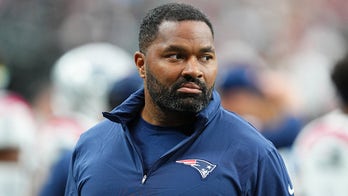Kyle Larson's 0.001-second victory over Chris Buescher at Kansas has sparked scrutiny of NASCAR's finish line determination process, warranting a closer examination of its intricate timing and scoring system.

Kyle Larson's razor-thin victory over Chris Buescher at Kansas Speedway has brought the spotlight on NASCAR's finish line determination process, prompting scrutiny and a need for clarification.
The incident has reignited the discussion about the reliability and accuracy of NASCAR's timing and scoring system. While the absence of a formal protest from Chris Buescher's team suggests acceptance of the result, the lingering doubts demand a closer examination of the technology and methodology employed.
NASCAR utilizes the same sophisticated camera system used in major sporting events, capturing high-speed images of objects crossing a laser line at the finish. This intricate system creates a composite image representing the cars' relative positions at the moment of line crossing. However, the resulting image is not a conventional photograph but a compilation of snippets, which explains its compressed and occasionally blurred appearance.
The placement of the timing-and-scoring line is crucial, and it is aligned with the edge of the painted finish line. Slight discrepancies can occur due to repainting during race weekends, potentially creating a minor misalignment.
Another key component is the timing transponder, located near the rear of each car's chassis. These transponders trigger the timing line when the front edge of the car crosses the finish line. However, due to variations in the transponder's positioning or the car's angle, the triggering may not perfectly coincide with the actual physical crossing of the finish line.
The transponder's margin of error is a contentious topic, with NASCAR reporting it as +/-0.0015 seconds. This margin allows for discrepancies between the transponder's timing and the photo finish's determination.
Following the Kansas Speedway incident, suggestions have emerged to improve transparency and accuracy. Pre-race verification of the finish line alignment and dissemination of the photo finish image promptly after the race are potential improvements.
One important point is that NASCAR has been transparent and provided explanations regarding the finish line determination process. The absence of formal protests indicates acceptance of the results. However, the pursuit of improvement and perfection remains a valid goal.
The intricacy of the technology and the possibility of minor discrepancies warrant scrutiny and refinement to ensure the utmost fairness and accuracy in determining the race's outcome. NASCAR's commitment to enhancing its timing and scoring system is crucial, and fan confidence in the outcome's credibility depends on its execution.










